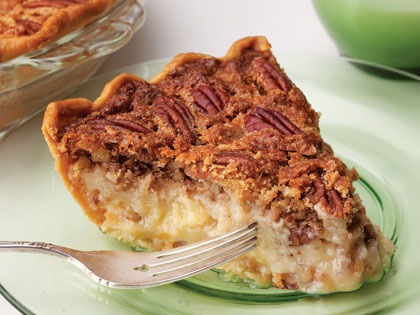Sometimes, I like to imagine that moment in history when the primordial pie maker, the baker lost in the mists of time, had the brilliant idea of wrapping dough around filling, thus inventing pie. I’d sure like to shake his or her hand, because pie is surely one of humankind’s greatest inventions.
Likely, the early pies were something hand-sized, easy to carry and the perfect vehicle for a farmhand’s lunch. Somewhere along the way, the pie plate came into being, and the two-crust pie has been an American staple since colonial times.
Much like the foundation of a house, the crust is the foundation of a pie. You want something that’s flaky, but not too crumbly. Rolling and shaping a round crust takes a bit of practice and patience. You sometimes have to patch holes and stretch edges to make things fit just right.
I am by no means a pie expert or even a neat cook. My crusts won’t win any prizes. But I do have a recipe that’s so simple I can now remember it without consulting the well-worn recipe card in my box.
I’ve used this crust again and again, always with good results. It came from my dear, departed Aunt Ruth, my mom’s oldest sister, who always had a delicious slice of strawberry-rhubarb pie waiting for me when I’d visit.
The nice thing about this dough is that it is forgiving. It can be rolled and folded—or even wadded back up for a re-do—without getting tough or falling apart like other overworked crusts tend to do. The key to keeping the crust from sticking is to use generous amounts of flour on your rolling surface and rolling pin. The dough can absorb a good amount of flour without falling apart.
If you happen to make a hole in the crust, you can patch it. Just wet your finger in a glass of water and run it around the edge of the hole. Place a scrap of dough over the hole to cover it and press to seal.
Aunt Ruth’s Pie Crust
2 cups flour
Scant cup shortening
Measure flour into large mixing bowl. Remove four tablespoons flour and put in small mixing bowl or glass. Add three tablespoons of water to removed flour and mix into smooth paste with spoon. Add enough water to just cover paste. Pour most of that water back off and mix. Paste should slide off spoon. Cut shortening into flour in large bowl until well blended. Pour paste over shortening mixture and mix.
Divide dough in half and form into balls. Place one on floured board. Flatten with hands into round disk. Roll with floured rolling pin, keeping round shape and turning and flipping often. Keep rolling surfaces well floured. When you are ready to put crust in pie plate, drape loosely over rolling pin and lift into plate.
Repeat above steps with remaining dough. Makes two single crusts or a top and bottom for two-crust pie.


